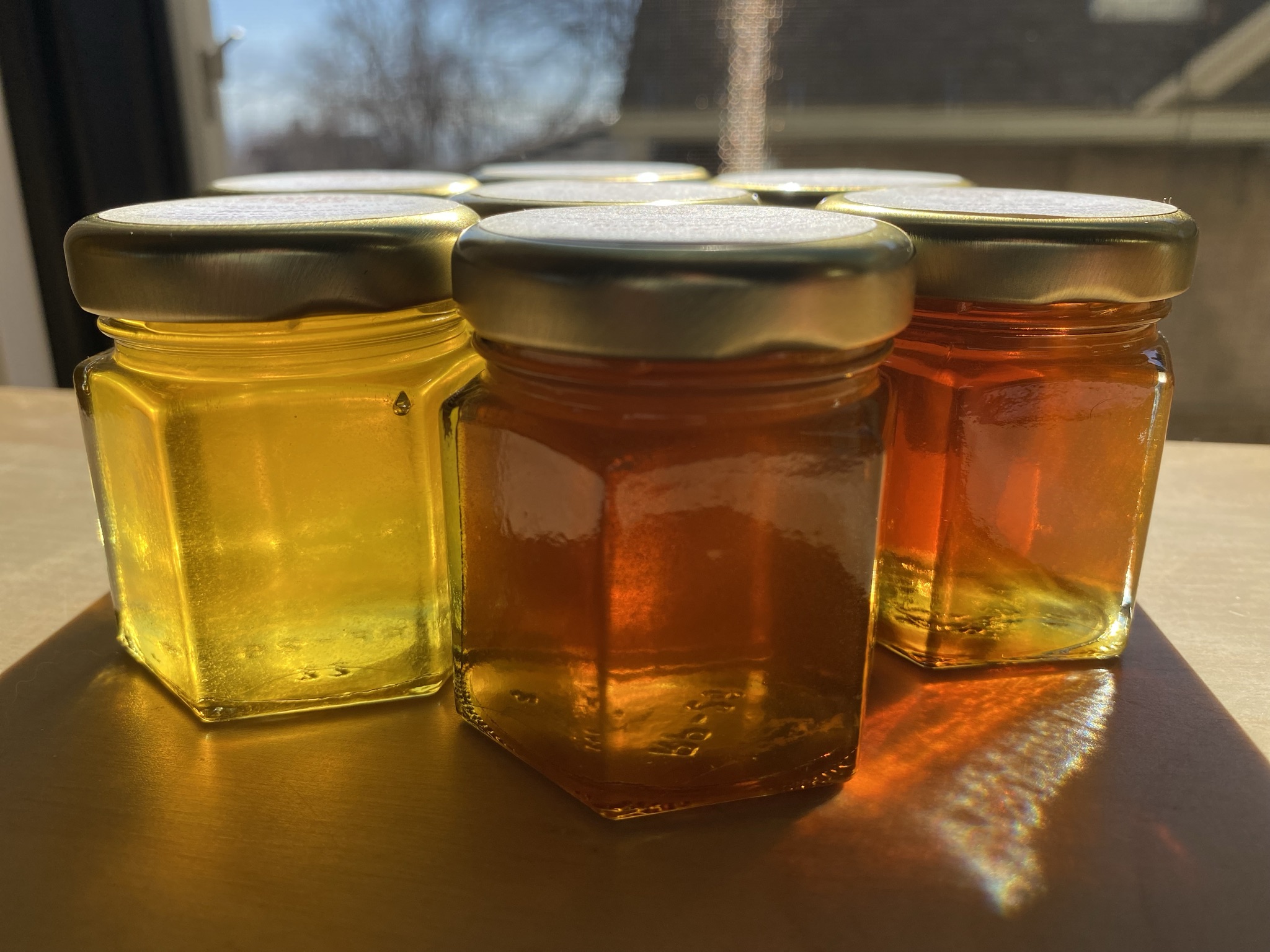Here are our available varietals! Read on below to learn why they differ from each other.
Spring honeys:
- #008 (RUNNING LOW): Grasses, lavender, herbs.
- #009: Lemon, butter, chamomile. Thick and candy-like.
- #026: Apple, rose, pecan, and lemon.
- #028: Lemon thyme, rosemary.
- #029: Linden flowers and cucumber.
Summer honeys:
- #003: Strong mint, catnip.
- #004: Pumpkin pie, mint, catnip.
- #010 (RUNNING LOW): Lilac, violet, rose.
- #011 (RUNNING LOW): Rose, lilac, citrus.
- #013: Alfalfa honey. Clover in the beginning, butterscotch finish.
- #014: Alfalfa honey. Notes of taffy and cotton candy.
- #017 (RUNNING LOW): Ginger, butter, apples.
- #018: Cherry, ginger, black pepper.
- #030 (RUNNING LOW): Lavender with a slightly spicy finish.
- #031: Raisins and dates.
- #035: Cotton candy, banana nut bread. Intensely sweet!
Fall honeys:
- #002 (RUNNING LOW): Late fall blooms, reminiscent of apples.
- #019: Alfalfa honey. Rose, clover, tropical fruit. Sour finish.
- #021: Caramel, brown sugar, chocolate.
- #023: Plum cake, oak, candied sweet potatoes.
Not all honey varietals are available in all sizes — contact us for availability!
About our flavors!
Honey can vary quite dramatically from batch to batch in terms of color and flavor profile! Here’s why:
Seasonality
In 2021, our springtime honey was especially light in color and texture, with delicate floral overtones. The earliest of these, batches #007 and especially# 006, had a strong black locust nectar flavor, light and zesty. Our fall honey this year tended to be richer in flavor and darker in color. This pattern doesn’t necessarily hold true every year, and even honey harvested on the same day from adjacent hives can be radically different from each other.
Additionally, the bees continue to tend the honey over time, so honey from the same hive will taste different depending on when it was harvested.
Sourcing
First, a little about nomenclature. Honey made with a majority of its nectar coming from one particular plant species can be legally labeled as such, which is why you can find “Orange Blossom Honey” or “Clover Honey” in supermarkets. Along these lines, the honey from our Neola hives, (e.g. batches #013, #014, #019, and #020,) is primarily Alfalfa Honey.
Our other honeys, produced in the Avenues neighborhood of Salt Lake City, are very diverse in their sourcing. The bees collect pollen and nectar from all kinds of plants: herbs, vegetables, trees, ornamentals, native wildflowers, and weeds. The labeling convention is to call that “wildflower honey,” but we feel that’s a bit of a misnomer, so we label it “raw honey.”
Harvest size
Some honey producers harvest in large batches from multiple hives or blend from multiple seasons. In our opinion, this yields generic-tasting honey with all the character averaged away. By contrast, we harvest our honey in very small batches, from one hive at a time, which allows for tremendous specificity of flavor.
And of course, all our batches to date are 100% pure honey, with no added flavors or infusions.
Flavor notes
All of these factors interact to produce honey with subtlety and character. Much like fine wine, coffee, or chocolate, there are smaller flavor notes beyond the initial sweetness and honey-ness that make each batch unique and that lend themselves to particular pairings. Batch #008, for example, is especially delicious in hot green tea, and batch #023 really elevates a peanut butter and honey sandwich.

